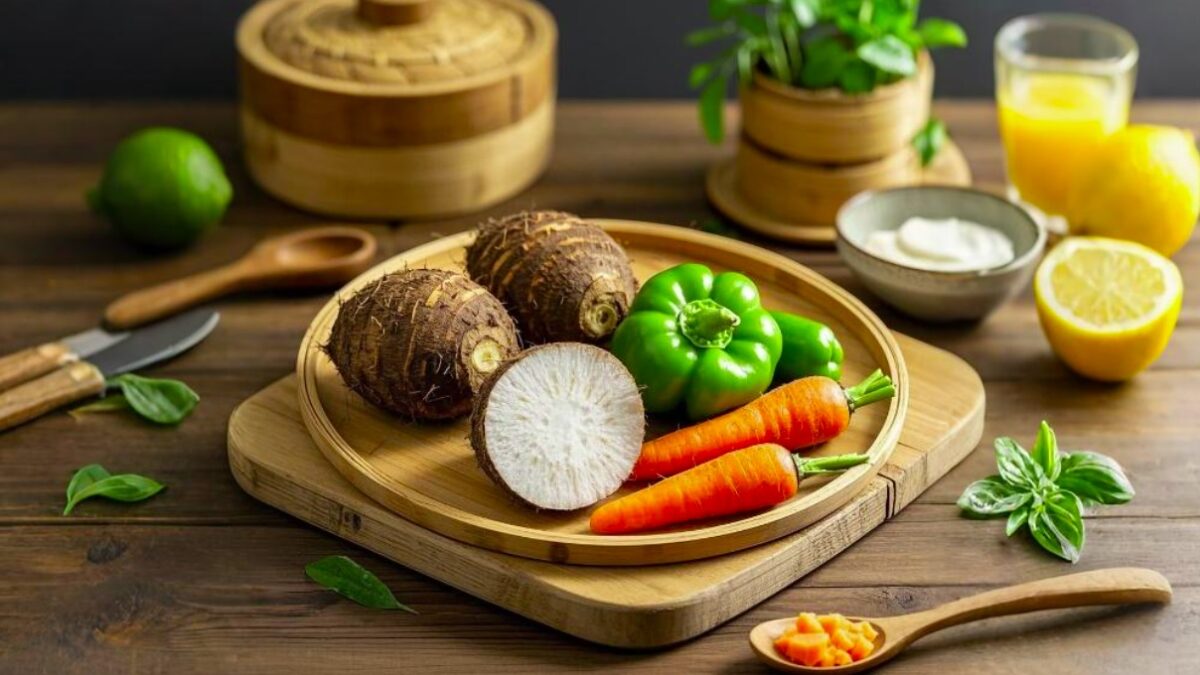
Date: 06/01/2024 06/02/2024
Location: Star Lake Meditation Center
Teacher: Otto Huang
Buddhist Diet and Regimen
Taro
Taro: A Nutritious and Creamy Root Vegetable
1. What is Taro?
Taro (Colocasia esculenta) is a starchy root vegetable grown in tropical and subtropical regions. It has a rough, fibrous outer skin and a smooth, creamy interior. When cooked, taro becomes soft and slightly sweet, making it a versatile ingredient in both savory and sweet dishes.
2. Nutritional Value of Taro
Taro is a high-fiber, nutrient-rich food with essential health benefits, including:
1.Dietary Fiber: Supports digestion and promotes gut health.
2.Complex Carbohydrates: Provides sustained energy and serves as a great staple food.
3.Vitamin C: Enhances immune function and aids in collagen production.
4.Potassium: Helps maintain fluid balance and regulates blood pressure.
5.Magnesium: Supports bone health and nervous system stability.
3. Health Benefits of Taro
1.Aids Digestion: High fiber content helps regulate gut bacteria and improve digestion.
2.Regulates Blood Sugar Levels: Low glycemic index (GI) helps maintain stable blood sugar.
3.Supports Heart Health: Potassium helps lower blood pressure and reduce cardiovascular risks.
4.Boosts Immunity: Vitamin C and antioxidants help combat oxidative stress and support immune function.
5.Aids in Weight Management: High fiber and low-fat content make it a healthy dietary option.
4. Best Ways to Eat Taro
1.Steamed or Boiled: Simply cooked to retain its natural flavor and creamy texture.
2.Simmered in Soups: Enhances the sweetness and texture of soups and stews.
3.Baked or Roasted: Sliced and roasted for a crispy outside and soft inside.
4.Stir-Fried: Lightly seasoned and stir-fried for a flavorful dish.
5.Used in Desserts: Ideal for making taro paste, taro cake, or sweet taro soup.
5. Interesting Facts About Taro
How to choose the best taro?
Look for firm, dry, and unblemished taro roots.
Can taro be eaten raw?
No, raw taro contains calcium oxalate, which can cause irritation; it must be cooked before consumption.
How should taro be stored?
Keep it in a cool, dry place to prevent sprouting and moisture buildup.
Conclusion
Taro is a nutritious and versatile root vegetable packed with fiber, vitamin C, potassium, and magnesium. Regular consumption supports digestion, maintains blood sugar stability, boosts immunity, and promotes heart health. Whether steamed, baked, or used in desserts, taro is a delicious and healthy addition to any diet.
Conclusion
Taro is a nutritious and versatile root vegetable packed with fiber, vitamin C, potassium, and magnesium. Regular consumption supports digestion, maintains blood sugar stability, boosts immunity, and promotes heart health. Whether steamed, baked, or used in desserts, taro is a delicious and healthy addition to any diet.

